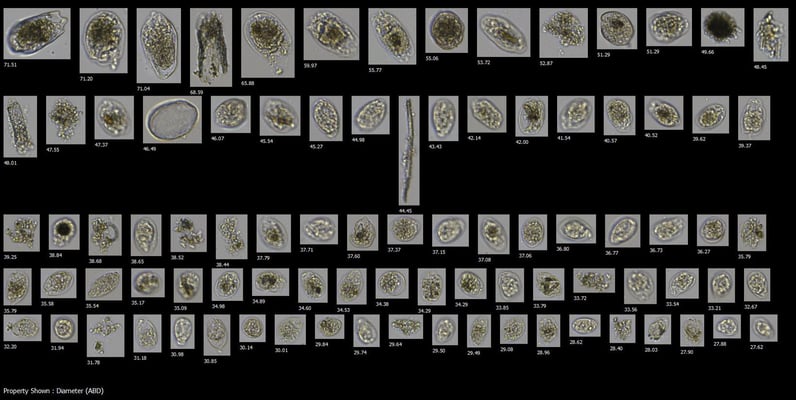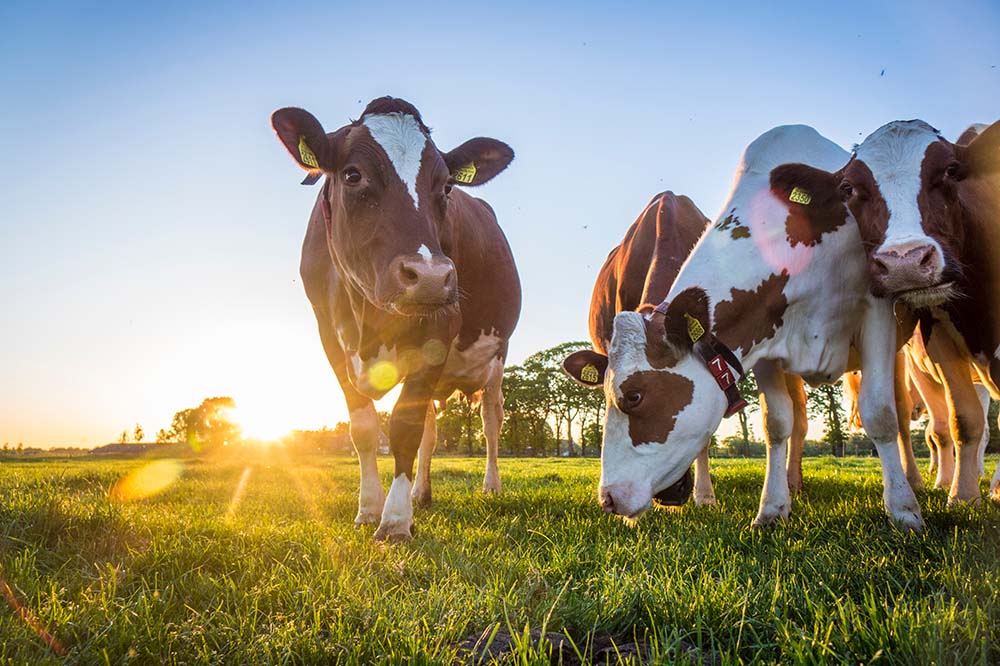Using FlowCam to image MOO-ving particles? …you’re on the right tract!
Corralling food through a cow’s digestive system is no small task, yet the tiniest of living organisms get the job done. From start to finish, microbes lining the intestinal tract – and especially those occupying the rumen compartment of the cow’s stomach, ensure the cow gets the nutrition it needs and that the rest of the digesta keeps moving right along. Since so many depend on beef and dairy products for their nutritional sustenance, it behooves us to learn as much as possible about these wee visceral fauna.
The medley of microbes involved in cow nutrition have intrigued scientists since the 19th century, however current pressures of population growth, climate change, and other sociocultural factors have turned special scientific attention to the ruminal microbes – those inhabiting the 150-liter tank of the cow’s stomach. One milliliter of rumen fluid has been estimated to hold 10 million protozoa, 100 billion bacteria and 10 thousand fungi1!
This highly complex community of microbial life functions to ferment partially chewed plant material into carbohydrates and proteins for the cow to absorb, thereby defining feed uptake efficiency and quality of livestock production. At the same time, ruminal archaea are actively harvesting excess hydrogen gas generated in the fermentation process and releasing it into the atmosphere in the form of methane – a process that relieves the cow of intestinal pressure but consequently contributes to emissions of harmful greenhouse gas. Meanwhile, the final product of ruminal digestion, manure, is a natural fertilizer that serves to sequester carbon, thereby enriching soils and improving biomass, helping boost land use productivity in vulnerable regions and communities.
The richness of microbial content in the cow rumen is a recognized reporter of overall cow health and is often inspected to ensure optimal herd management strategies. Microscopic analysis of rumen fluid is typically used to assess protozoan livelihood since these larger microorganisms are easier to visualize and because they are known to physically interact with the much smaller bacteria and archaea2. Traditional light microscopic analysis however is time-consuming and can only interrogate a very small sample of the enormous microbial content in the rumen – and therefore, is not an efficient approach for routine assessment of ruminal content and animal health.
 Pictured above: a sample of bovine rumen fluid imaged on FlowCam, showing protozoan microorganisms
Pictured above: a sample of bovine rumen fluid imaged on FlowCam, showing protozoan microorganisms
Flow imaging microscopy with FlowCam offers a robust method for fast, efficient, and accurate feedback on protozoan densities and population characteristics in rumen fluid. The diversity of protozoa can be evaluated based on physical features such as size, shape, color, and morphology. Further, quantitative parameters such as particle count and concentration can be determined within minutes, enabling more immediate rumen fluid sample analysis.
With the global population estimated to reach 9.2 billion people by the year 20503, improved agricultural management and livestock practices are needed to face the challenges of food production and nutritional security. FlowCam can help scientists and livestock managers understand the microbial composition of rumen fluid as they develop sustainable strategies to safeguard animal, human, and ecosystem health worldwide4.
References
- Source: Beef Magazine http://bit.ly/rumen-microbes
- Gast RJ, Sanders RW, Caron DA. Ecological strategies of protists and their symbiotic relationships with prokaryotic microbes. Trends Microbiol. 2009;17:563–9.
- Pawlak, K.; Kołodziejczak, M. The Role of Agriculture in Ensuring Food Security in Developing Countries: Considerations in the Context of the Problem of Sustainable Food Production. Sustainability 2020, 12, 5488. https://doi.org/10.3390/su12135488
- https://www.worldbank.org/en/topic/agriculture/brief/safeguarding-animal-human-and-ecosystem-health-one-health-at-the-world-bank











